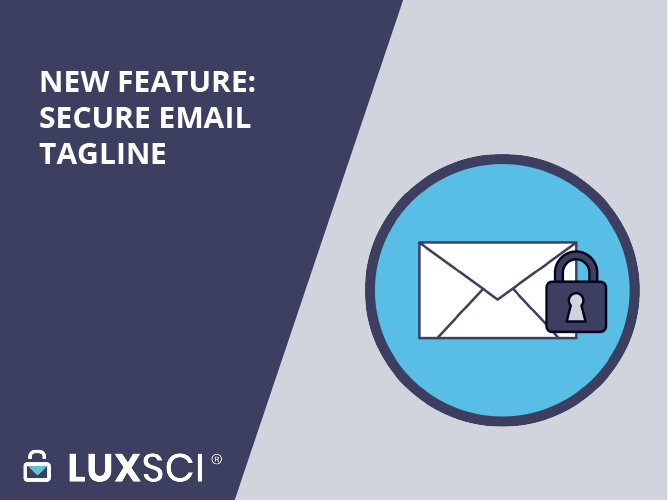Reduce Risk with Set It and Forget It Email Encryption
Tuesday, February 7th, 2023Leveraging PHI in your communications provides relevant, meaningful information to patients while significantly increasing positive health outcomes. LuxSci’s secure and HIPAA-compliant always-on email encryption streamlines the communications process and reduces risk. Use PHI safely and securely with set it and forget it email encryption technology.
The Email Encryption Landscape
There are many ways to enable encryption for messages that contain protected health information. The most common include data loss prevention technology and manual opt-in encryption.
First, data loss prevention uses software to scan message contents to look for keywords, phrases, or patterns that indicate the presence of sensitive or confidential information. Administrators must create detailed rules that instruct the DLP technology on what information is privileged and should be encrypted. While this is effective for some common keywords and patterns like social security numbers, a lot of health data does not fall neatly into pre-defined rules. DLP can quickly be rendered inadequate by misspellings, typos, or other human errors that fail to trigger the technology.
The next way that email messages are commonly encrypted is through human decision-making. The user switches a toggle or types a word like “encrypt” into the subject line or message to notify the system that the message should be secured. This form of opt-in encryption is hazardous because it relies on staff members making the right decisions around confidentiality and security. Even the best employees will make mistakes. How many times have you forgotten to include an attachment with an email message?
A Better Way: Set It and Forget It Email Encryption
 At LuxSci, we recommend a different approach. Encrypting every email message automatically drastically reduces the risk of user error and ensures 100% message encryption. In industries like healthcare and finance, even one mistake could lead to a breach with severe financial penalties.
At LuxSci, we recommend a different approach. Encrypting every email message automatically drastically reduces the risk of user error and ensures 100% message encryption. In industries like healthcare and finance, even one mistake could lead to a breach with severe financial penalties.
By encrypting all messages with a baseline of TLS encryption, organizations can meet their compliance requirements and provide a better user experience for recipients because portal logins are not required.
Set It
Setting up LuxSci’s Secure Connector takes less than one hour. Administrators can set it up globally, with no local installation or download required by staff members to connect. Once DNS and encryption settings are configured, employees can send secure emails immediately.
Administrators can choose the encryption configuration option that best fits their business processes. TLS is suitable for most communications, but sensitive data like health records, financial reports, or other confidential information can be sent to a secure portal for increased security. Administrators can create and manage encryption settings on an individual or group level to provide maximum flexibility. LuxSci’s encryption technology is highly configurable to meet any business need.
Forget It
Administrators don’t have to rely on employee decision-making when all messages are automatically encrypted. Employees do not need to be trained on when to enable encryption. It just happens automatically in the background, which increases security and gives you peace of mind.
It’s also easier for administrators to manage. There is no need to create detailed lists of rules to trigger encryption technology. Once you’ve selected your encryption preferences, all emails are sent that way. Minimal ongoing training or support is needed, and administrators can be confident that their messages are protected. In addition, users can verify that secure message delivery occurred with comprehensive analytics reports.
The Results: Improved Patient Engagement
TLS encryption is a game-changer because it is secure enough to meet compliance requirements and is user-friendly. TLS-encrypted messages appear just like regular, unencrypted emails in the recipient’s inbox, making them easy to read and respond to but without the risk of interception or eavesdropping. This is crucial for users who are not tech-savvy and helps to increase engagement with the message contents. If a user needs to take an extra step to log into a portal or create an account, they are more likely to drop off and not read the message.
Reducing friction in patient communications helps improve conversions and nudges patients into taking actions that will improve their health outcomes. Access to health care needs to be equitable, and that means making clinical communications seamless for users of all technical abilities.



 (Click to Expand)
(Click to Expand)




